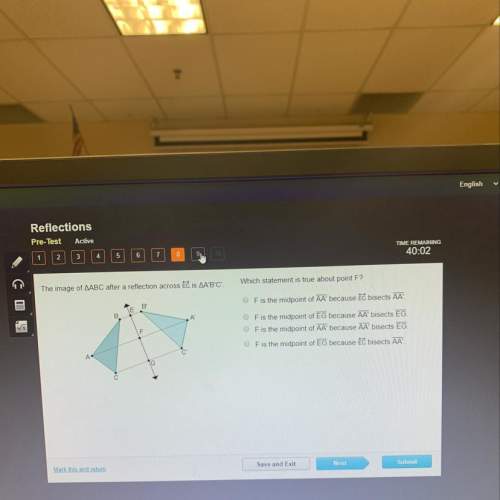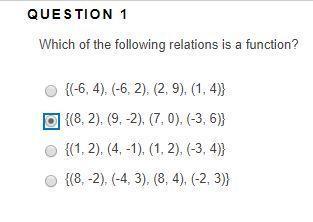Question 3 (10 points)
(09.06 HC)
The function H(t) = -16t2 + 32t + 50 shows the height...

Mathematics, 06.05.2020 05:31 jaliyahmw
Question 3 (10 points)
(09.06 HC)
The function H(t) = -16t2 + 32t + 50 shows the height (t), in feet, of a baseball after t seconds. A second baseball moves in the air along a path
represented by g(t) = 30 + 30.4t, where g(t) is the height in feet, of the object from the ground at time t seconds.
Part A: Create a table using integers 0 through 3 for the 2 functions. Between what 2 seconds is the solution to H(t) = g(t) located? How do you
know? (6 points)
Part B: Explain what the solution from Part A means in the context of the problem. (4 points)
(10 points)

Answers: 3


Another question on Mathematics


Mathematics, 21.06.2019 16:00
Aswim teacher sells lesson packages. the best deal has the highest ratio of lessons to total cost.swim lesson packagesnumber of lessons total cost$10$4010 1 $8015$80which package is the best deal? l lesson for $105 lessons for $4010 lessons for $8015 lessons for $80mark this and returnsave and exit
Answers: 3

Mathematics, 21.06.2019 20:30
If there is 20 dogs in the shelter and 5 dogs get homes, and then 43 more dogs come. how many dogs are there in the shelter?
Answers: 1

Mathematics, 21.06.2019 21:30
In a test for esp (extrasensory perception), the experimenter looks at cards that are hidden from the subject. each card contains either a star, a circle, a wave, a cross or a square.(five shapes) as the experimenter looks at each of 20 cards in turn, the subject names the shape on the card. when the esp study described above discovers a subject whose performance appears to be better than guessing, the study continues at greater length. the experimenter looks at many cards bearing one of five shapes (star, square, circle, wave, and cross) in an order determined by random numbers. the subject cannot see the experimenter as he looks at each card in turn, in order to avoid any possible nonverbal clues. the answers of a subject who does not have esp should be independent observations, each with probability 1/5 of success. we record 1000 attempts. which of the following assumptions must be met in order to solve this problem? it's reasonable to assume normality 0.8(1000), 0.2(1000)%30 approximately normal 0.8(1000), 0.2(1000)% 10 approximately normal srs it is reasonable to assume the total number of cards is over 10,000 it is reasonable to assume the total number of cards is over 1000
Answers: 1
You know the right answer?
Questions


Mathematics, 25.01.2020 20:31

Mathematics, 25.01.2020 20:31



Social Studies, 25.01.2020 20:31


Mathematics, 25.01.2020 20:31




Mathematics, 25.01.2020 20:31





Mathematics, 25.01.2020 20:31



Mathematics, 25.01.2020 20:31





